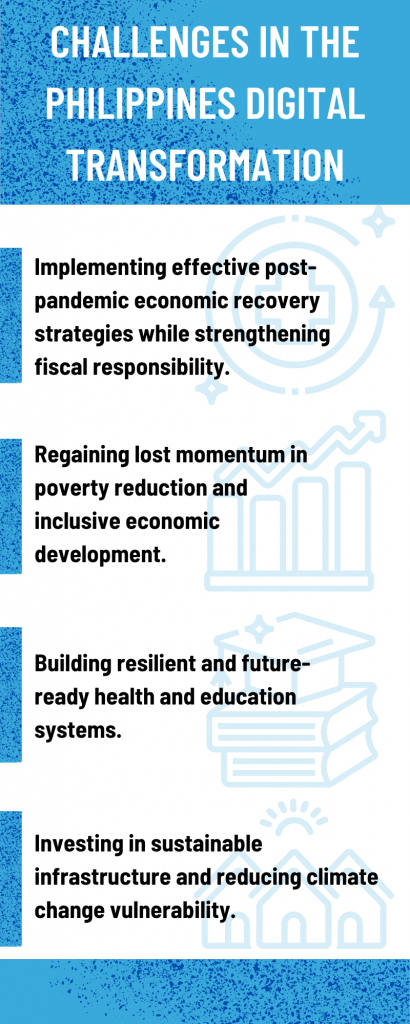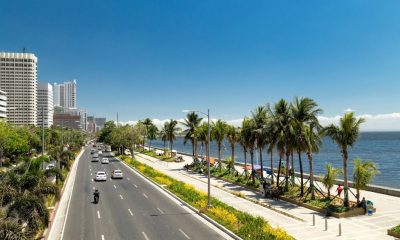Digital Economy
Philippines Improves Digital Competitiveness
Published
2 years agoon
By
SEADS TEAM
The Philippines improved two notches higher in the global digital competitiveness ranking. From 58th place in 2021 to 56th this year, the Philippines’ digital transformation is growing continuously despite the challenges of the pandemic.
The economic crisis in 2020 dragged our rankings to 57th from 55th place in 2019. The restrictions on foreign investors also hinder the country’s digital growth.
Now the country is on a positive outlook for more improvements in the IT sector and technological developments, with the Philippines moving up to two spots in the global digital competitiveness rankings.
Digital competitiveness metrics
The International Institute for Management Development (IMD) ranks 63 countries for digital competitiveness every year. IMD uses broad indicators including knowledge, technology, and future readiness to determine an economy’s overall ranking.
The metric system of IMD extends to various sub-factors.
Knowledge | Technology | Future Readiness |
Talent
Training and Education
Scientific Concentration
| Regulatory Framework
Capital
Technological framework
| Adaptive Attitudes
Business Agility
IT Integration
|
Findings in knowledge sub-factors
The country moved one notch higher than the previous year at 62nd. The IMD defined that the Philippines intangible infrastructure of allowing the discovery, understanding, and learning of new technologies can lead to digital transformation.
One of the overall strengths of the Philippines is the high number of students that graduate in sciences. Since 2018, the student’s preference towards Science and Technology (S&T) courses has increased by 60%. The bachelor’s degree holder for S&T accounts for 3.7 million in 2022, with a high ratio of 46% female students.
The Department of Science and Technology (DOST) stated in a recent interview how gender equality makes the country the best place for women scientists, researchers, and engineers.
However, the Philippines lags behind competing countries in scientific and technical employment. 76% of S&T graduates are either working abroad or engaged in occupations not related to their STEM course.
The total public expenditure under training and education increased significantly but still trails behind the Asia-Pacific region.
Findings in technology sub-factors
Although there was a decline in electronic exportation, the Philippines ranks five slots higher than 2021, placing 49th in the technology sub-factor.
The Philippines is among the top 10 countries worldwide in telecommunication investments. This is because of the lifted ban in foreign ownerships in telecommunications,airlines, domestic shipping, and railways.
Findings in future readiness sub-factors
We fall one rank lower than the previous year in the future readiness. The Philippines needs to improve connectivity to fully adapt technology in all government, business, and social activities.
The only strength in this factor is the attitude towards globalization with Senate Bill 2094 allowing 100% foreign ownership of public services.
Challenges in the Philippines digital transformation

The pandemic tested the Philippine economy. While the country is testing fundamentals to address crisis, IMD listed the challenges which hinders the Philippines digital transformation such as:
Implementing effective post-pandemic economic recovery strategies while strengthening fiscal responsibility.
A ten-point policy agenda designed to accelerate the economy’s recovery from the pandemic is in action. The agenda includes accelerating digital transformation through legislative measures. The national government prioritizes improving digital connectivity and facilitates digital improvement.
Regaining lost momentum in poverty reduction and inclusive economic development.
The zero-to-ten socioeconomic agenda helped to reduce poverty from the previous 23.3% in 2015 to 2018’s 16.7%. The country lost momentum during the pandemic and in 2022 over 19.99 million people lived below the poverty threshold or 18.1%, above the government’s target. The plan of the current administration is to reduce the poverty rate by 9% by the end of term.
The sudden unemployment in the midst of the pandemic increased the poverty rate. To preserve the workforce, some companies adopt flexible work arrangements.
Building resilient and future-ready health and education systems.
Institution closures during the pandemic affected the physical and mental health of millions of students. While strengthening education systems is necessary the administration focused its actions in vaccinations and healthcare capacity.
For 2022, the Department of Education (DepEd) received Php 631.77 billion to further improve training and education in the Philippines.
Investing in sustainable infrastructure and reducing climate change vulnerability.
Asian Development Bank (ADB), Climate Bonds Initiative (CBI), and Securities Exchange Commission (SEC) believed that investing in green infrastructure can supercharge the Philippine’s post-pandemic recovery.
Green infrastructures benefit’s in the economy includes renewable energy, low-carbon transport, sustainable water management, and sustainable waste management.
The Filipino attitude towards digitalization
The growing digital economy helped the Philippines post-pandemic recovery, with ecommerce adoption contributing 5.5% to the country’s GDP. But it is still not enough to achieve a higher rank in digital competitiveness ranking.
We are behind Asia Pacific countries as Filipinos remain technology consumers more than producers.
Investments in IT infrastructures can minimize digital divide. This can give lowliest families access to remote education and digital information. Local and emerging broadband companies contributed telecom industry growth from 17,850 in 2020 to 22,405 telco towers in 2022.
The Philippines attitude towards digitalization has always been open and receptive. Filipinos are early adopters when it comes to apps, and we’re leading providers of digital services and business processes among countries in Southeast Asia.
The rest of the country just needs to catch up, which is being spearheaded by the government sector. The digital transformation program of 2020 mandates the use of technology in all government units to deliver responsive public service. This can also increase employment in IT sectors in public administration and government eservices.
The Philippines attitude towards digitalization has always been open and receptive. Filipinos are early adopters when it comes to apps, and we’re leading providers of digital outsourcing services and business processes among countries in Southeast Asia.
The rest of the country just needs to catch up, which is being spearheaded by the government sector. The digital transformation program of 2020 mandates the use of technology in all government units to deliver responsive public service. This can also increase employment in IT sectors in public administration and government e-services.












